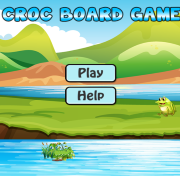Diagram on the life cycle of a fish quiz
Every aspect of a fish’s biology is suited to life under the sea, including their reproductive and developmental cycle.
Depending on their species, a female fish can release tens to hundreds of eggs into the ocean. Some species have dense eggs – since they sink to the bottom of the ocean, they are often hidden under sand or some rocks. Other species have eggs that float freely in the ocean.
When the eggs hatch, fish larvae swim out. For the first two to three days, they’ll happily feed on the nutrient-loaded yolk contained in their egg. After eating this meal, they become fish fry, or very young fish.
Unlike mammalian babies, fish fry are already able to feed themselves. It’s important that they eat enough to grow into their adult forms. This is also a very dangerous stage in their life cycle, as they make tasty treats for predators.
After reaching a considerable size, a fry becomes a juvenile or “adolescent” fish. It will start developing the fins and scales of an adult. Maturing into an adult means that the fish is now stronger and faster, and capable of mating to spawn its own batch of eggs.
Feel free to undertake our diagram on the life cycle of a fish quiz to test your knowledge on the life cycle of these undersea critters.










